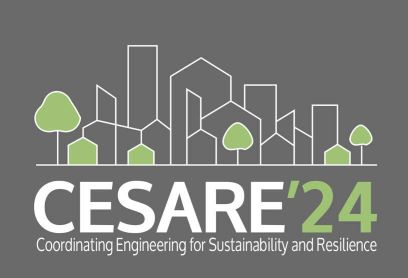Speaker
Description
Circular versus linear economic end-of-life treatment approaches were compared considering selected waste fractions of construction and demolition waste (CDW) obtained after the deconstruction of the building. The environmental assessment was conducted with Life Cycle Assessment (LCA). Only those CDW fractions were considered, for which circular end-of-life treatment approaches already exist and are implemented in practice. Selected CDW fractions were concrete, brick, steel, wood, glass, and plastics. Considering linear approaches, end-of-life treatments are mostly related to landfilling or incineration while considering circular approaches, end-of-life treatments are related either to recycling or reuse. The circular approach for waste concrete is crushing to produce recycled aggregate, which can be used in various types of applications, depending on its quality (e.g. technical adequacy). Similar approaches are used for the waste bricks. In the case of waste steel, recycling was considered a linear end-of-life treatment, as this is the most common treatment approach. The circular economic approach refers to the reuse of steel components obtained from deconstructed buildings. Waste wood was considered to be recycled and used for the production of either glue-laminated timber or particleboard. Recycling of waste plastics, as a circular approach, can be conducted via mechanical procedure. Recycling of glass can be conducted via melting and production of new glass. The results of LCA analysis confirmed that circular approaches for treatment with waste concrete, waste brick, steel, waste wood and waste glass yield significantly lower environmental impacts than linear end-of-life treatment approaches. Considering waste plastics, the results are not so straightforward. Benchmarking with incineration does not yield aspected results, considering several impact categories. However, recycling of waste plastics is environmentally more sustainable considering the impact on GWP.
| Topics | Circular Economy, Waste management |
|---|---|
| Keywords | LCA, waste treatment, concrete, wood, brick |

